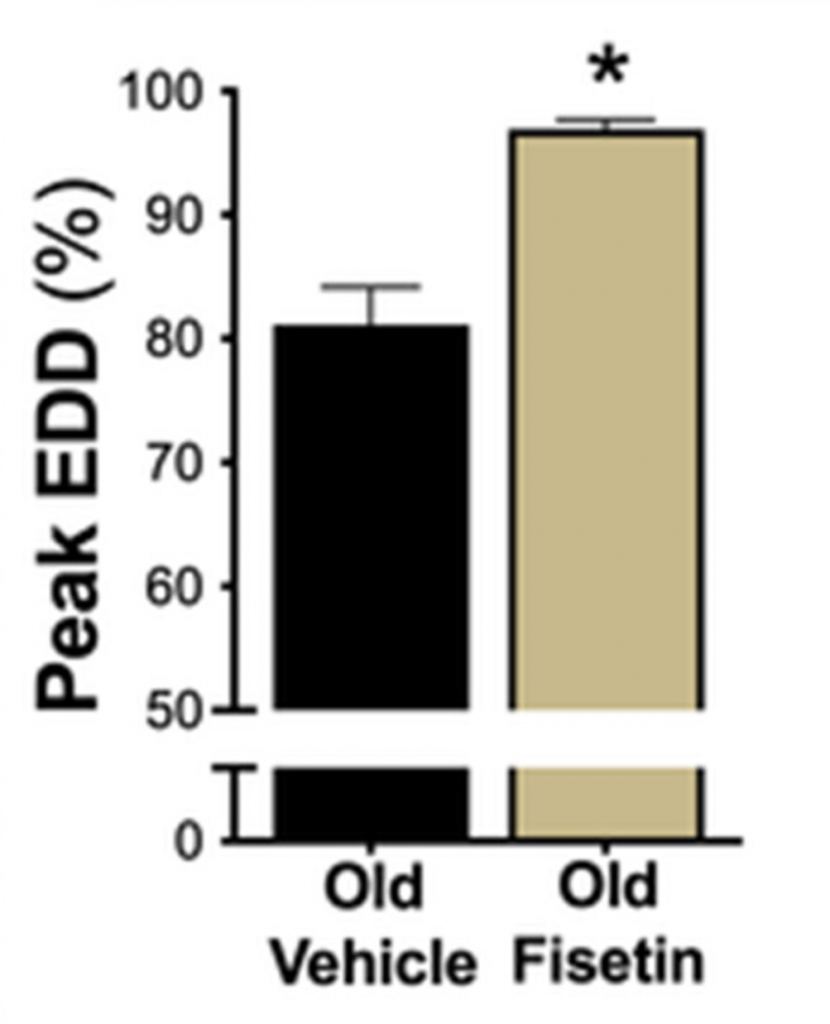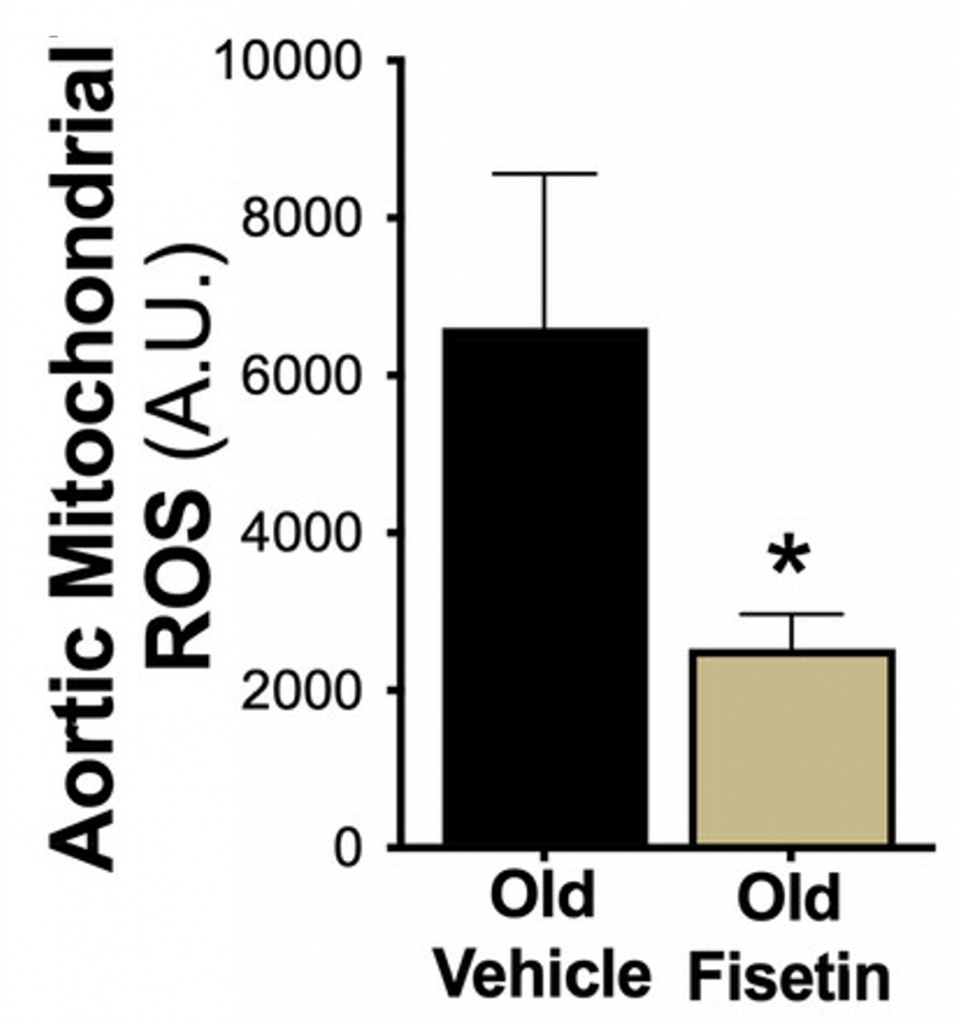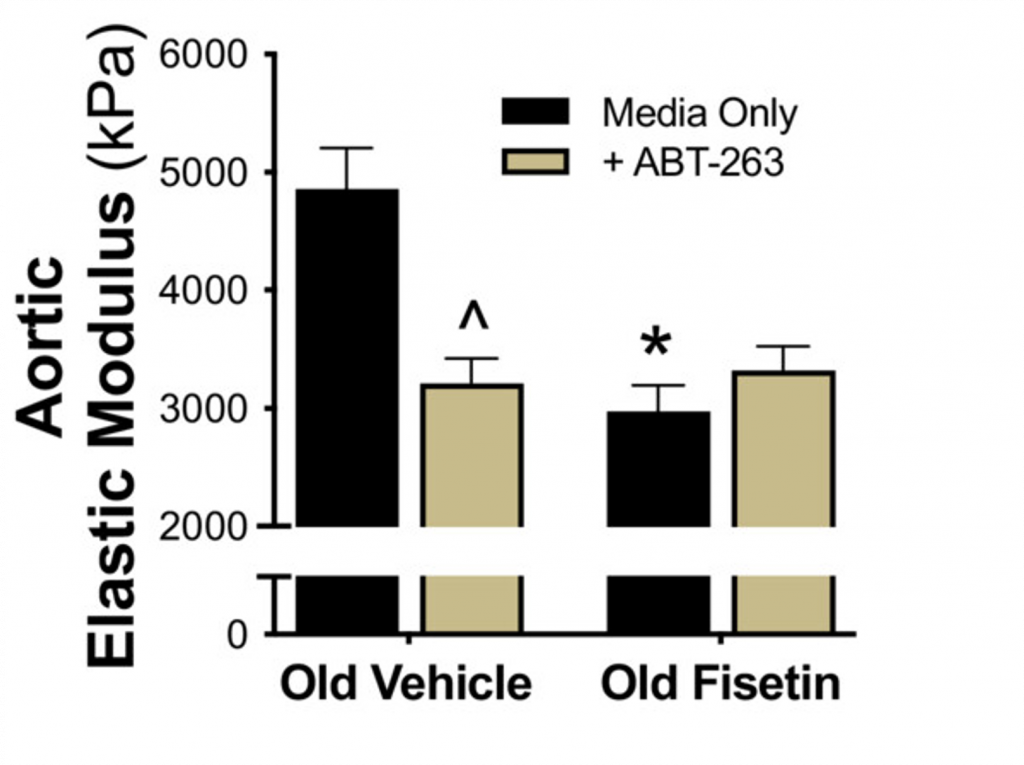Key Points:
- Fisetin improves artery function by increasing the diameter of arteries — artery dilation.
- Reduced reactive oxygen species (ROS) — reactive molecules that, in excess, contribute to drive aging— enhance artery dilation.
- Fisetin and the synthetic senolytic ABT-263 similarly reduce artery wall stiffness.
Cardiovascular disease (CVD) remains the leading cause of mortality worldwide. Furthermore, artery dysfunction and artery wall stiffening precede the development of CVD with aging. Keeping this in mind, halting the progression of artery dysfunction and stiffening could mitigate the occurrence of CVD and prolong the lifespan of millions.
Now, researchers from the University of Colorado Boulder report in Aging Cell that fisetin improves artery function by reducing excess ROS produced by mitochondria in old mice. Additionally, Mahoney and colleagues show that fisetin reduces artery stiffness, suggesting that this senolytic compound can combat cardiovascular disease.
Fisetin Combats Artery Aging
Fistein is a naturally occurring plant-based molecule called a polyphenol — known for its senolytic properties. Senolytics are compounds that remove senescent cells, which are dysfunctional cells triggered by stressors like DNA damage. Senescent cells accumulate with age throughout the body and promote the gradual deterioration of the organs they inhabit, promoting chronic diseases.
Particularly susceptible to becoming senescent cells are endothelial cells (ECs) — the cells that line the inside of our arteries. ECs mediate the dilation of our arteries but, as a consequence of aging, can become senescent and cease to perform this function. Furthermore, senescent ECs can also render surrounding cells within the artery dysfunctional. It follows that removing senescent cells could potentially improve artery dilation.
To test this, Mahoney and colleagues examined 27-month-old mice, equivalent in age to 75-year-old humans. The old mice were supplemented with 100 mg/kg/day of fisetin on an intermittent dosing paradigm — 1 week on; 2 weeks off; 1 week on. As a result, compared to normal old mice, fisetin-treated old mice showed about a 20% increase in artery dilation, suggesting that fisetin improves artery EC function.

ECs mediate artery dilation by producing a gas called nitric oxide (NO). NO flows from ECs to neighboring artery muscles, signaling them to relax. By using a drug that blocks NO, the researchers found that the effects of fisetin on artery dilation were abolished. These findings demonstrate that fisetin increases artery dilation by increasing NO levels produced by ECs.
Excessive ROS levels can damage our cells, including ECs, leading to reduced NO levels. Since mitochondria are the primary source of excess ROS, Mahoney and colleagues measured the effect of fisetin on mitochondrial-derived ROS. They found that, in the arteries of fisetin-treated old mice, ROS levels were lowered by 2.6-fold. These findings suggest that fisetin treatment improves artery function by lowering ROS levels.

For our arteries to dilate, they need to stretch. However, this is difficult if our artery walls become stiff due to aging. Thus, Mahoney and colleagues measured artery wall stiffness and found that it was reduced by about 20% by treating old mice with fisetin. Moreover, adding the synthetic senolytic ABT-263 did not further reduce artery stiffness, suggesting that fisetin has a similar effect to ABT-263.

Fisetin Combats Aging
Mahoney and colleagues’ study suggests that fisetin counteracts artery aging by restoring EC function via removing senescent cells and reducing ROS levels. The study also suggests that fisetin reduces artery wall stiffness. Since EC dysfunction and artery stiffness promote CVD, fisetin could potentially deter the occurrence of CVD with aging.
“These findings identify oral intermittent fisetin supplementation as a promising therapeutic strategy for clinical translation to improve arterial function with aging,” said the authors.
Previously, fisetin has been shown to remove senescent cells from the brains of aged sheep and alleviate inflammation-induced depression and cognitive dysfunction in rodents. Additionally, fisetin has been shown to shield the kidney from injury and damage. Therefore, along with artery aging, fisetin treatment could potentially deter brain and kidney aging. Future studies in aged mice and humans will help to confirm this.
“Although fisetin is found in a variety of fruits and vegetables, fisetin-rich diets are not feasible due to content variations in food. Nonetheless, fisetin is commercially available as a dietary supplement and is reported to be safe for human consumption,” add the authors.